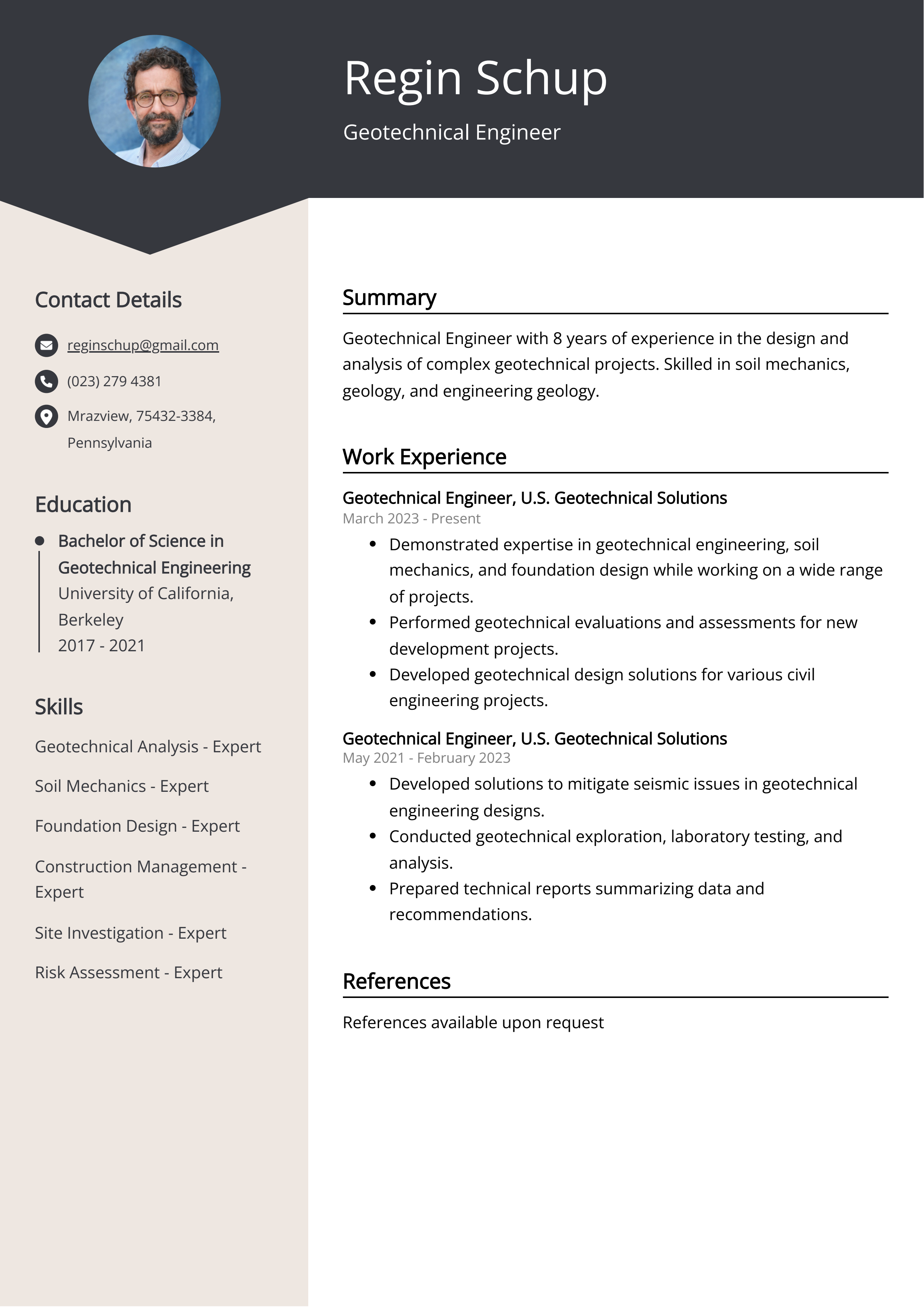The Buzz on Geotheta
The Buzz on Geotheta
Blog Article
Little Known Questions About Geotheta.
Table of Contents8 Simple Techniques For GeothetaA Biased View of Geotheta10 Easy Facts About Geotheta Explained8 Easy Facts About Geotheta ShownSome Known Details About Geotheta

They carry out site investigations, gather examples, execute research laboratory tests, and evaluate data to assess the viability of the ground for construction projects - Engineer of Record. Based upon their searchings for, geotechnical designers offer referrals for structure layout, incline security, keeping structures, and reduction of geotechnical threats. They collaborate with various other experts, such as architects, architectural designers, and building groups, to ensure that geotechnical factors to consider are integrated right into the total project style and application
By evaluating the behavior and residential or commercial properties of soil and rock, they can identify prospective geotechnical dangers such as landslides, dirt settlement, or slope instability. Their competence assists stop failings or crashes that can threaten lives and residential property. Here are some in-depth obligations and obligations of a geotechnical engineer: Site Investigation: Geotechnical engineers conduct site investigations to collect information on subsurface problems.
They interpret the information to comprehend the properties and actions of the dirt and rock, including their toughness, permeability, compaction qualities, and groundwater conditions. Geotechnical Evaluation and Layout: Geotechnical engineers analyze the data collected during site examinations to analyze the security and viability of the website for building and construction projects. They do geotechnical computations and modeling to examine aspects such as bearing capability, negotiation, slope stability, lateral earth pressures, and groundwater flow.
Excitement About Geotheta
Structure Layout: Geotechnical engineers play a critical role in making structures that can safely sustain the desired structure. They examine the soil conditions and tons requirements to determine the appropriate structure kind, such as superficial foundations (e.g., footings), deep foundations (e.g (https://www.anyflip.com/homepage/zuylo)., stacks), or specialized strategies like dirt renovation. They think about variables such as settlement limitations, birthing capability, and soil-structure communication to develop optimal structure designs
They evaluate building and construction strategies, monitor site tasks, and carry out area assessments to confirm that the style referrals are adhered to. If unforeseen geotechnical issues occur, they assess the situation and offer referrals for removal or modifications to the style. Risk Analysis and Reduction: Geotechnical engineers examine geotechnical dangers and threats connected with the project website, such as landslides, liquefaction, or soil disintegration.

Partnership and Communication: Geotechnical engineers work very closely with various other experts associated with a project, such as architects, structural engineers, and building teams. Efficient communication and cooperation are necessary to incorporate geotechnical considerations right into the general task design and building process. Geotechnical designers offer technical proficiency, answer queries, and make sure that geotechnical requirements are satisfied.
Not known Facts About Geotheta
Right here are some kinds of geotechnical designers: Structure Designer: Structure designers focus on developing and assessing foundations for structures. They examine the soil problems, lots needs, and site features to determine the most appropriate structure kind and design, such as shallow foundations, deep structures, or specialized strategies like stack structures.
They evaluate the variables influencing slope security, such as soil properties, groundwater conditions, and incline geometry, and develop approaches to stop incline failures and minimize risks. Earthquake Designer: Quake engineers concentrate on examining and developing frameworks to endure seismic pressures. They analyze the seismic threat of a site, review dirt liquefaction possibility, and develop seismic layout requirements to guarantee the safety and security and resilience of structures throughout quakes.
They perform field testing, collect samples, and analyze the collected information to characterize the soil buildings, geologic developments, and groundwater conditions at a website. Geotechnical Instrumentation Engineer: Geotechnical instrumentation engineers concentrate on look what i found surveillance and determining the actions of soil, rock, and frameworks. They mount and maintain instrumentation systems that keep track of factors such as dirt negotiation, groundwater degrees, incline motions, and architectural displacements to examine efficiency and supply very early warnings of prospective problems.
Our Geotheta Diaries
They conduct examinations such as triaxial tests, loan consolidation examinations, direct shear examinations, and permeability tests to gather data for geotechnical evaluation and style. Geosynthetics Designer: Geosynthetics engineers specialize in the layout and application of geosynthetic materials, such as geotextiles, geogrids, and geomembranes. They make use of these materials to enhance soil stability, enhance slopes, offer drain solutions, and control disintegration.
They have a tendency to be investigatory people, which suggests they're intellectual, introspective, and investigative. They are interested, methodical, logical, logical, and logical. A few of them are likewise social, suggesting they're kind, charitable, participating, patient, caring, practical, understanding, sensible, and pleasant. Does this audio like you? Take our cost-free career test to discover if geotechnical designer is just one of your leading job matches.
In the workplace setting, geotechnical engineers use specialized software tools to execute estimations, develop designs, and analyze information. They prepare records, evaluation job specifications, interact with clients and staff member, and coordinate project activities. The workplace setup offers a conducive setting for research study, analysis, and collaboration with various other specialists included in the project.
The Ultimate Guide To Geotheta
They frequently see job websites to conduct website examinations, examine geotechnical conditions, and gather data for evaluation. These gos to include taking a trip to various locations, occasionally in remote or difficult surfaces. Geotechnical designers may perform soil tasting, conduct examinations, and screen construction tasks to make sure that the geotechnical facets of the job are being applied properly.
Geotechnical designers likewise function in specialized geotechnical research laboratories. In these facilities, they perform experiments, perform examinations on dirt and rock samples, and examine the design homes of the products. Geotechnical research laboratory engineers work extensively in these settings, managing screening devices, running instruments, and videotaping data. They work together with various other laboratory staff to ensure accurate and reliable screening outcomes.
Report this page